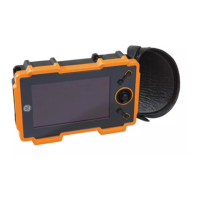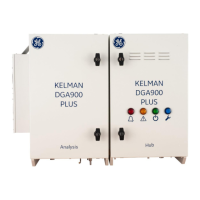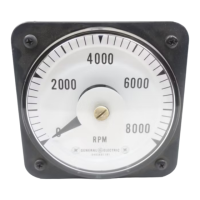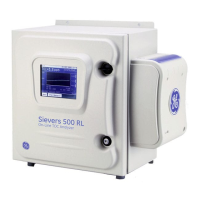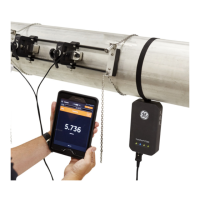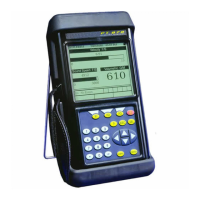Krautkramer USM 35X Issue 01, 04/2005 5-21
OperationCalibrating the USM 35X
– Position the gate on the second calibration echo:
– Press .
The second echo is stored, the calibration is carried
out, and the CAL function is reset to 0. The valid cali-
bration is briefly confirmed and carried out.
If you select the function group BASE, you can read
the material velocity and probe delay.
Calibration with dual-element (TR) probes
Dual-element (TR) probes are especially used for wall
thickness measurement. The following peculiarities
must be taken into account when using these probes:
Echo flank
Most dual-element (TR) probes have a roof angle
(transducer elements with inclined orientation toward
the test surface). This causes mode conversions both
at beam index (sound entry into the material) and at the
reflection from the backwall, which can result in very
jagged echoes.
V-path error
Dual-element (TR) probes produce a v-shaped sound
path from the pulser via the reflection from the backwall
to the receiver element. This so-called “V-path error”
affects the measuring accuracy. You should therefore
choose two wall thicknesses that cover the expected
thickness measurement range for the calibration. In this
way, the V-path error can be corrected to the greatest
possible extent.
Krautkramer USM 35X Issue 01, 04/2005 5-21
OperationCalibrating the USM 35X
– Position the gate on the second calibration echo:
– Press .
The second echo is stored, the calibration is carried
out, and the CAL function is reset to 0. The valid cali-
bration is briefly confirmed and carried out.
If you select the function group BASE, you can read
the material velocity and probe delay.
Calibration with dual-element (TR) probes
Dual-element (TR) probes are especially used for wall
thickness measurement. The following peculiarities
must be taken into account when using these probes:
Echo flank
Most dual-element (TR) probes have a roof angle
(transducer elements with inclined orientation toward
the test surface). This causes mode conversions both
at beam index (sound entry into the material) and at the
reflection from the backwall, which can result in very
jagged echoes.
V-path error
Dual-element (TR) probes produce a v-shaped sound
path from the pulser via the reflection from the backwall
to the receiver element. This so-called “V-path error”
affects the measuring accuracy. You should therefore
choose two wall thicknesses that cover the expected
thickness measurement range for the calibration. In this
way, the V-path error can be corrected to the greatest
possible extent.
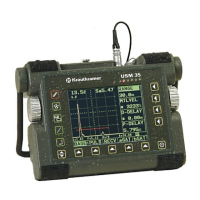
